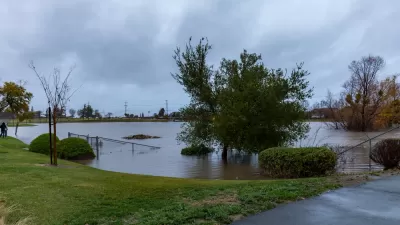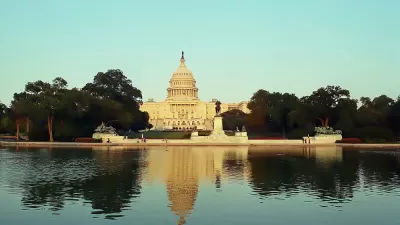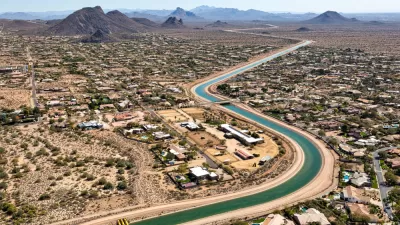New tools and technologies of the so-called Internet of Things are helping cities get a better handle on water scarcity and overabundance.

"Whether cities face scarcity or abundance—forced to conserve water or plan for torrential rain—new tools are emerging that leverage the Internet of Things to effectively manage water," according to an article by Laura Adler.
Adler goes on to survey the different types of technologies in use in cities around the country. For instance: " Companies such as Hortau and CropX and nonprofits like Santa Cruz County’s Community Water Dialogue are implementing radio- or cellular-enabled sensor systems that track variables including rainfall, humidity, soil composition, topography, temperature, and sunlight. Coupled with analytics and weather prediction data, this information enables farmers to make smarter decisions about irrigation."
On the drought side of the equation, Adler also mentions technological innovations for irrigation on municipal properties and for preventing leaks from urban water transportation systems.
For managing stormwater, Adler notes that the Internet of Things is helping cities plan for and anticipate heavy rainfall. For instance: "Firms like Opti are helping cities pull together data from water storage facilities and weather predictions to ensure that there is sufficient space to collect and process rainwater runoff. With analytics and smart infrastructure management, cities can plan for maximum runoff capture and processing, with the dual benefit of increasing water harvesting and reducing pollution."
FULL STORY: Come Drought or High Water

Alabama: Trump Terminates Settlements for Black Communities Harmed By Raw Sewage
Trump deemed the landmark civil rights agreement “illegal DEI and environmental justice policy.”

Study: Maui’s Plan to Convert Vacation Rentals to Long-Term Housing Could Cause Nearly $1 Billion Economic Loss
The plan would reduce visitor accommodation by 25% resulting in 1,900 jobs lost.

Planetizen Federal Action Tracker
A weekly monitor of how Trump’s orders and actions are impacting planners and planning in America.

Wind Energy on the Rise Despite Federal Policy Reversal
The Trump administration is revoking federal support for renewable energy, but demand for new projects continues unabated.

Passengers Flock to Caltrain After Electrification
The new electric trains are running faster and more reliably, leading to strong ridership growth on the Bay Area rail system.

Texas Churches Rally Behind ‘Yes in God’s Back Yard’ Legislation
Religious leaders want the state to reduce zoning regulations to streamline leasing church-owned land to housing developers.
Urban Design for Planners 1: Software Tools
This six-course series explores essential urban design concepts using open source software and equips planners with the tools they need to participate fully in the urban design process.
Planning for Universal Design
Learn the tools for implementing Universal Design in planning regulations.
Caltrans
Smith Gee Studio
Institute for Housing and Urban Development Studies (IHS)
City of Grandview
Harvard GSD Executive Education
Toledo-Lucas County Plan Commissions
Salt Lake City
NYU Wagner Graduate School of Public Service





























